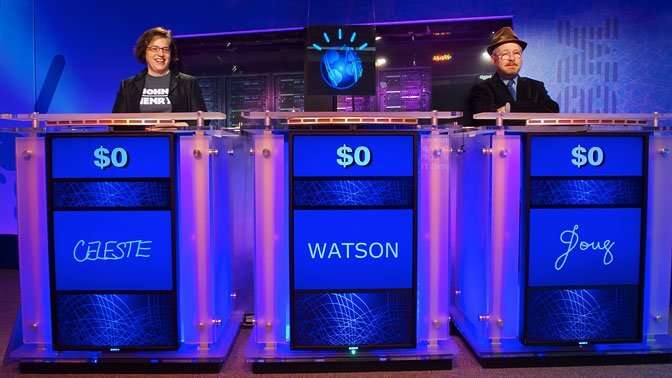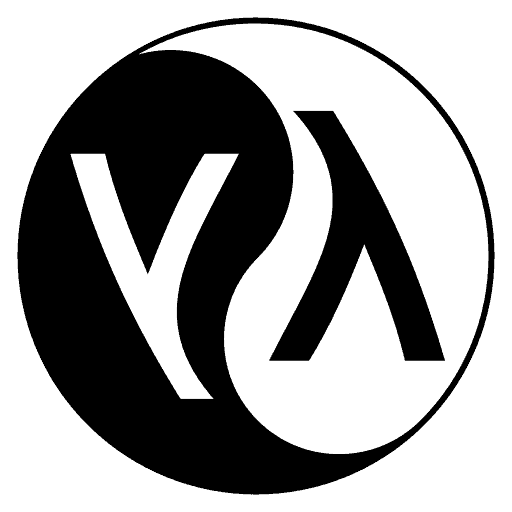MODIFIED ON: November 29, 2022 / ALIGNMINDS TECHNOLOGIES / 0 COMMENTS

Recent studies show that businesses are investing more in artificial intelligence.
According to studies conducted by DataProt, 37% of businesses employ AI in their operations. The industry will be earning $126 billion by the year 2025 and the market value is expected to cross $267 billion by 2027.
Another study, conducted by Oberlo, states that 91% of top businesses have already invested in Artificial Intelligence. Also according to them, around 62% of customers are ready to share data if it improves their experiences with a business.

As artificial intelligence and related development are becoming more popular, the programming languages used for developing such software are also becoming popular.
If you are someone who has an interest in developing AI solutions, understanding the programming languages used for AI development will be compelling to you.
Best programming languages for AI development
When it comes to AI development, there are several programming languages you can choose from. Among them, here are major 10 programming languages that are used extensively in AI and machine learning development in 2022.
1. Python
Python is a high level, general-purpose programming language. It uses significant indentation to improve its code readability. Using language constructs and an object-oriented approach Python helps with developing clear and logical code for small to large scale AI projects.
Python was released in the year 1991 by Guido van Rossum. Ever since its inception, the language has been used in desktop apps, web apps, networking apps, scientific computing, machine learning apps and data science applications.
The libraries offered by Python such as Tensorflow, Keras, PyTorch, Scikit-learn, PyBrain and MXNet etc. make it one of the popular choices for AI development. Since Python offers rich text processing tools and uses modular architecture for scripting, it has also become a popular choice for Natural Language Processing (NLP).
A few of the leading companies that use Python include Google, Amazon, NASA, Reddit, Instagram, Intel, IBM, Facebook, Netflix, JP Morgan Chase and so on.

2. R programming language
R is a very popular programming language for statistical programming, especially data analysis and statistical computing. The language was created by statisticians Ross Ihaka and Robert Gentleman in 1993. As of March 2022, R is ranked at 11th position in the TIOBE index.
R is primarily written in C, Fortran and R itself. It comes with a command-line interface and offers support for multiple third-party user interfaces like RStudio and Jupyter.
R’s S heritage enabled it to have best-in-the class object-oriented programming facilities. R supports procedural programming with the use of functions and object-oriented programming with generic functions.
Due to its advantages, R is considered the primary programming language for statistical computations in domains such as biology, sociology, finance and medicine. The advantages of R can be extended through user-created packages that offer statistical techniques, graphical devices, import/export, reporting etc. The packaging system allows researchers to organize data, code and files in a systematic way for sharing and archiving. It is the ease of using such packages that drives the popularity of R as the best programming language for data science.
The alternatives to R programming language are SPSS, Stata and SAS, However, they are commercial statistical packages while R is a free software under the GNU General Public License.
Renjin and FastR used in the Java Virtual machines is a Java implementation of R programming language. The runtime engine “TERR” that is part of “Spotfire” is developed in R.
R is used by most of the leading companies including Facebook, Twitter, Google, Microsoft, Uber, Airbnb etc.
3. Java
Java is one of those programming languages that everyone has heard of.
This high-level, class-based, object-oriented programming language was designed in the year 1995 by James Gosling and became popular in the industry due to its write once, run anywhere (WORA) principle. WORA simply means that a compiled Java code can be run on all platforms that support Java without recompiling.
Java is one of the most used programming languages for client-server web applications. Even though it shares similarities with C and C++ in terms of the syntax used, Java has fewer low-level facilities than both.
Apart from web applications, Java is also used in Android apps, Artificial Intelligence and machine learning applications, search algorithms, server-side programming, neural networks and multi-robot systems. Its scalability, low dependencies, platform independence and support for Java Virtual Machines have made Java a popular general-purpose programming language.
When it comes to AI development, Java offers several libraries and frameworks such as Apache OpenNLP, Java Machine Learning Library, Neuroph, Deep Java Library, MLlib and so on.
Java is used by several companies including the noteworthy ones such as Google, Uber, Netflix, Airbnb, Instagram, Amazon, Spotify, Slack etc.

4. Rust
Designed by Graydon Hoare in 2010, Rust is multi-paradigm, a general-purpose programming language designed for performance and safety. Even though it is syntactically similar to C++, Rust guarantees memory safety unlike the former. Another benefit of Rust is that it offers memory safety without garbage collection and reference counting is only optional.
Rust offers low-level memory management as well as high-level features such as functional programming. Since it offers speed, performance and safety, Rust is gaining increased popularity day by day. It has been adopted and implemented by mainstream companies like Amazon, Dropbox, Facebook, Google, Microsoft and Discord. Google announced Rust as an alternative to C/C++ for their Android open-source project.
Here is a list of recent adoptions we have seen in the industry.
- Microsoft Azure IoT Edge, a platform used to run Azure services and artificial intelligence on IoT devices, uses rust to create some of its components.
- The blockchain platform Polkadot is written in Rust.
- TerminusDB is written in Prolog and Rust
- AWS’s Firecracker and Bottlerocket use Rust.
- Google Fuchsia, an operating system by Google, uses Rust for its components.
- Figma is written in Rust.
- The Servo parallel browser engine developed by Mozilla in collaboration with Samsung is written in Rust.
5. Prolog
Prolog, which derived its name from “Programming in Logic”, is a logic programming language mainly used in artificial intelligence and computational linguistics. It was designed by Alain Colmerauer and Robert Kowalski in 1972.
Unlike many other programming languages, Prolog inherits first-order logic and is intended mainly as a declarative programming language. The logic is declared in the form of relations represented by facts and rules.
Even though Prolog was one of the first logic programming languages, hence one of the oldest, it still holds its position in the industry. There are several free and commercial adoption of Prolog such as Tabling (used in systems like B-Prolog, XSB, SWI-Prolog, YAP, and Ciao), hashing (used in WIN-PROLOG and SWI-Prolog) and Tail Call Optimization (TCO).
Prolog has been mainly used as a primarily logic language for expert systems, term rewriting, type systems, automated planning, theorem proving and natural language processing. This programming language is best suited for an AI solution that features rule-based logical queries such as searching databases, voice control systems, and filling templates. IBM Watson is one such system.

IBM Watson. Image credit: Pbs.org
6. C++
C++ is one of the well-known programming languages due to the popularity of C, the programming language it inherits from.
Designed by Bjarne Stroustrup as a general-purpose programming language in 1985, c++ has seen significant expansion over the years. Now it supports object-oriented, generic, and functional features besides low-level memory manipulation.
The main advantage of C++ is its performance, efficiency, and flexibility as it was designed as a programming language for building resource-constrained software and large systems. The language is used extensively in building desktop applications, servers (mainly for e-commerce, web search and databases), video games and performance-critical applications such as telephone switches and space probes.
C++ offers several AI and ML libraries such as Caffee, Microsoft Cognitive Toolkit (CNTK), TensorFlow, DyNet, OpenNN, FANN, Shogun and mlpack library.
The popular companies that use C++ include Walmart, Google, Accenture, Twitch, Telegram and Lyft.
7. Lisp
Lisp, a name derived from “LISt Processor”, is the second-oldest high-level programming language still in use and is only one year younger than Fortran. Designed by John McCarthy in 1958, this family of programming languages has a long history with the presence of several distinctive dialects such as Racket, Scheme, Common Lisp and Clojure.
Designed primarily as practical mathematical notation for computer programs, Lisp later became the most favoured programming language for Artificial Intelligence. Several inventions in the field of programming are pioneered by Lisp and they include tree data structure, dynamic typing, conditionals, automatic storage management, recursion, self-hosting compiler, higher-order functions and read-eval-print loop. Apart from these, Lisp offers several features such as rapid prototyping, dynamic object creation, flexibility, garbage collection and information process capabilities.
CLML (Common Lisp Machine Learning Library), mgl, Antik and LLA are the popular AI and ML libraries offered by Lisp.
iRobot, The Mimix Company, NASA (in their PVS), Rigetti Quantum Computing, Grammarly, Mind AI, Carre Technologies, NuEcho, Kina knowledge, Emotiq and Anaphoric are a few examples of companies that are using Lisp in their products or operations.

Logo of Lisp programming language
8. Julia
Julia is a high-level, high-performance, dynamic programming language well suited for AI solutions that deal with numerical analysis and computational science.
Designed by Jeff Bezanson, Alan Edelman, Stefan Karpinski and Viral B. Shah in 2012, Julia supports concurrent, parallel and distributed computing.
Advantages of Julia include
- It can direct call “C” and “Fortran” libraries without glue code.
- Compiles all code by default to machine code before running it.
- Automatic memory management/garbage collection
- It uses easter evaluation
- Offer libraries for floating-point calculations, random number generation, linear algebra, and regular expression matching.
Julia offers several packages for Artificial Intelligence and machine learning. Few of them are Flux.jl, Knet.jl, Mocha.jl, TensorFlow.jl, ScikitLearn.jl, TextAnalysis.jl, MXNet.jl, DecisionTree.jl, Merlin.jl, and LossFunctions.jl. Find the complete list here.
9. Haskell
Named after great logician Haskell Curry, Haskell is a general-purpose, statically-typed, purely functional programming language. Primarily designed for research, teaching and industrial application, Haskell boast of pioneering innovative features like type classes that enable type-safe operator overloading.
According to the number of Google searches conducted for tutorials, Haskell was the 28th most popular programming language in 2021.
The several features offered by Haskell include lazy evaluation, pattern matching, lambda expressions, list comprehension, type classes and type polymorphism. Since Haskell is purely a functional language, functions have no side effects.
Popular applications of Haskell include Agda (proof assistant), Cabal, Darcs (revision control system), Git-annex, Pandoc, TidalCycles, Cryptol, Facebook’s anti-spam programs and Cardano blockchain platform.

10. Smalltalk
This object-oriented programming language was specifically designed for constructionist learning. It is a dynamically typed reflective language which means that using Smalltalk, developers can create software programs that have the ability to examine, introspect and modify their own structure and behaviour.
Smalltalk’s reflective features help developers with advanced debugging in the most user-friendly way. In fact, Smalltalk ranked second in the list of “most loved programming languages” in the Stack Overflow Developer Survey in 2017.
Designed by Alan Kay, Dan Ingalls and Adele Goldberg in 1972, Smalltalk has influenced so many programming languages such as Python, Ruby, Java and Objective-C.
Even though it was created mainly for AI-related studies, Smalltalk lost its position in front of other popular AI programming languages such as Python and R. However, Smalltalk is picking up the pace by introducing more libraries for AI and ML development and natural language processing. For example, Pharo has a numerical package called PolyMath that is almost equal to NumPy of Python.
Due to its conciseness, object purity, simplicity and better OOP implementation, Smalltalk has started regaining the attention it always deserved as an AI language.
Conclusion
The adoption of artificial intelligence and machine learning is growing at a fast pace. There are several programming languages used in AI and ML development. However, languages like Python and R are the most popular. To meet the growing demand of the industry, there are several other programming languages that are expanding their capabilities to become the best AI programming language of tomorrow.
Leave a reply
Your email address will not be published.
-
Recent Posts
- The Role of AI in Business Growth: Top Trends for 2025 and Beyond
- The Evolution of Voice Search in AI: What’s Next for 2025?
- How to Hire an AI Developer: A Complete Guide 2025
- Top 10 Android App Development Trends in 2025
- Top Trends in Product Modernization for 2025 and Beyond
-
Categories
- MVP Development (5)
- AlignMinds (56)
- Operating Systems (1)
- Android POS (3)
- Application Hosting (1)
- Artificial Intelligence (49)
- Big Data (2)
- Blockchain (1)
- Cloud Application Development (8)
- Software Development (39)
- Software Testing (9)
- Strategy & User Experience Design (4)
- Web Application Development (28)
- Cyber Security (6)
- Outsourcing (7)
- Programming Languages (3)
- DevOps (5)
- Software Designing (6)
- How to Code (4)
- Internet of Things (1)
- Machine Learning (2)
- Mobile App Marketing (5)
- Mobile Application Development (25)
- Mobile Applications (11)







